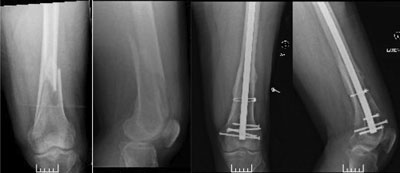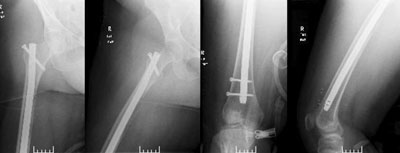Reamer-irrigator-aspirator use safe and efficient for harvesting bone graft
SAN FRANCISCO — Researchers studying the use of a reamer-irrigator-aspirator for intramedullary bone graft harvesting deemed the procedure reliable with a 1.96% complication rate.
“[Reamer-irrigator-aspirator] RIA in our eyes, is a reliable, safe and efficient technique to harvest non-structural autogenous bone graft,” investigator Lars M. Qvick, MD, said during his presentation at the American Academy of Orthopaedic Surgeons 2012 Annual Meeting. “It has a low complication rate, but preoperative patient counseling and risk assessment are critical. Intraoperative fluoroscopy is of paramount importance to ensure proper guide wire placement to avoid mostly technical errors, as confirmed in our study.”
Qvick and colleagues conducted a retrospective chart and radiographic review of 204 RIA procedures performed in 184 patients at a university-affiliated level 1 trauma center between 2007 and 2010. The patients had a mean age of 50 years. The mean body mass index was 31.1 for the 77 women and 31.2 for the 107 men in the study. Surgeons used the antegrade femoral approach in 86% of cases and the retrograde approach in 2%. The tibial approach was retrograde in 9% and antegrade in 3%.

This 49-year-old man underwent left antegrade femoral RIA bone graft harvesting for subtalar nonunion after attempted fusion with iliac crest bone grafting for post-traumatic arthritis. Anterior distal femoral cortical thinning was noted caused by eccentric reaming. On postoperative day 6, while sitting in a chair with elevated left leg and bending forward, the patient felt a "snap" in his left thigh. His distal third femur fracture with retrograde intramedullary fixation and 12-month follow-up is shown.
Images: Qvick LM
The researchers investigated risk factors and associated variables such as the amount of bone graft harvested, weight bearing restrictions, and patient comorbidities. They used any operative revision for fracture, impending fracture, infection, bleeding or hematoma as the study endpoint.

A 25-year-old woman with talus osteonecrosis with Charcot arthropathy underwent right antegrade femoral RIA bone graft harvesting for right tibiotalocalcaneal fusion. She sustained posterior cortical penetration without fracture/displacement. Intraoperative prophylactic intramedullary stabilization is shown.
Surgeons harvested a mean of 47±22 mL of bone graft. The investigators discovered four complications (1.96%) including two supracondylar femur fractures 6 days and 41 days after surgery, a subtrochanteric fracture after a fall at 17 days postoperatively and a prophylactic intramedullary stabilization for posterior cortical penetration without fracture. There were no tibial complications or revisions for infection.
“We are currently investigating risk factor and patient selection guidelines, comparing nonoperative donor site morbidity, cost-effectiveness and the clinical relevance of the osteogenic properties,” Qvick said. – by Renee Blisard
Reference:
- Qvick LM, Ritter C, Hohman DW, Anders MJ. Donor site morbidity with reamer-irrigator-aspirator (RIA) use for autogenous bone graft harvesting. Paper #17. Presented at the American Academy of Orthopaedic Surgeons 2012 Annual Meeting. Feb. 7-11. San Francisco.
For more information:
- Lars M. Qvick, MD, can be reached at Department of Orthopaedic Surgery, University at Buffalo, School of Medicine and Biomedical Sciences, Erie County Medical Center, 462 Grider St., Buffalo, NY 14215; email: imq@gmx.net
- Disclosure: Qvick has no relevant financial disclosures.

